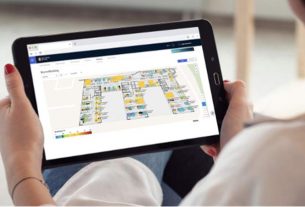Wouldn’t it be great if geolocation was available as a native service on any connected device? Wouldn’t it be even better if there was a solution that had up to ten times the battery life of current cellular solutions? How about allowing clients to pay for geolocation services when required? Geolocation’s future has arrived.
Overview of Geolocation
One of the most compelling and rapidly increasing Internet of Things (IoT) applications is geolocation. Geolocation-enabled technologies locate, track, and monitor physical assets like equipment, products, vehicles, and people. Transportation, logistics, healthcare, and food services are among the industries looking to replace inefficient and time-consuming manual operations with geolocation asset management solutions. On the other hand, traditional GPS technology is expensive, has technological limitations that prohibit successful deployments, and requires much power to operate.
Installation & Maintenance
It is easy to make mistakes when adopting IoT. The manual registration process, for example, when putting sensors in a building, is prone to human error. For example, each device’s location must be recorded during the installation or maintenance of your IoT devices. If your location is incorrect, the data you receive from the device is worthless.
Track and Trace
Geolocation is widely utilized in asset management programs with a mobility component. This category, however, continues to be hampered by a shortage of low-power and cost-effective solutions, resulting in low adoption. Scaling deployments of traditional GPS trackers that require batteries to be replaced several times per year is difficult and expensive, especially when thousands are in the field.
Data Analytics
Information diversity, such as rich geographical data, enables AI engines to do superior analytics. It allows enterprises to optimize operational operations and validate the legitimacy of a device and its contents. If the registered location is not found in your database, it indicates that something is amiss or that fraud is possible.
The Future of Geolocation
Semtech has worked tirelessly to make geolocation technology as low-power and touch-free as feasible. We tackled major IoT concerns such as sensor data diversity, cost of ownership, and ease of use. Our creative solutions to these problems have made geolocation one of the primary drivers of the widespread adoption of Semtech’s LoRa devices and the LoRaWAN standard.
Expanding geolocation availability and use cases have created opportunities for new business models. When vehicles are transferred, notifications are sent, informing operations of the precise coordinates of the new location, saving time and averting loss. This solution is built on a private LoRaWAN network deployed and managed by Lora Gateways.
Geolocation capabilities have the potential to be included in every IoT device, including fixed assets. Many of our geolocation use cases involve stationary or infrequently moving devices. Consider geolocation as a feature that is so inexpensive that you would use it for a minimal time over the IoT device’s lifetime, perhaps several times a year, perhaps once a year, or, why not, once in the device’s lifetime.
How Is Geolocation for Every Device Possible?
Semtech created the LoRa EdgeTM platform, which comprises a combined, modular offering. The first is LoRaWAN, which combines WiFi and GNSS positioning on a single chip. Following that is a device management and LoRa CloudTM Geolocation service with subscription-based and consumption-based pricing options for pay-as-you-go. Finally, a tracker reference design focused on cloud application development for application developers.
The experts at Semtech released a modular approach since we recognize the ecosystem’s diversity. Some people want the device-to-cloud component, possibly to reduce time to market. Some merely require a chip and will build on top of that. They may have all the components needed to develop a software path in-house, whether firmware or cloud software. Others might want a whole system.
How is a LoRa gateway operated?
Modules whose devices include a LoRa concentrator that enables the reception of LoRa packets. Radio modules known as LoRa gateways are equipped with a LoRa concentrator, which allows the reception of LoRa packets. In the LoRa gateway’s operating system background, packet forwarding software operates. The network administrator has more control over managing his gateway in this fashion. Although the data rate between the end node (also known as the node or end device) and the LoRa gateway is low, this compromise is required to support long-lasting battery life and a wide radio spectrum.
In summary,
The experts at Akenza believe every IoT device, whether mobile or stationary, should have a low-power geolocation-ready function. It is made feasible by the low power requirements of LoRa gateways, LoRaWAN, and the LoRa Edge platform, which provides the IoT industry’s most insufficient power and most economical geolocation capabilities.
Get inspired by Akenza-powered IoT solutions. In today’s highly volatile technology environment, solutions that enable an agile approach to development and innovation are required. The possibilities for connecting the world around us are limitless. It is a matter of awareness, expense, and complexity. We are confident that by significantly lowering the work and complexity that businesses face when developing IoT solutions, we will be able to steer the Internet of Things movement toward broad market application.



